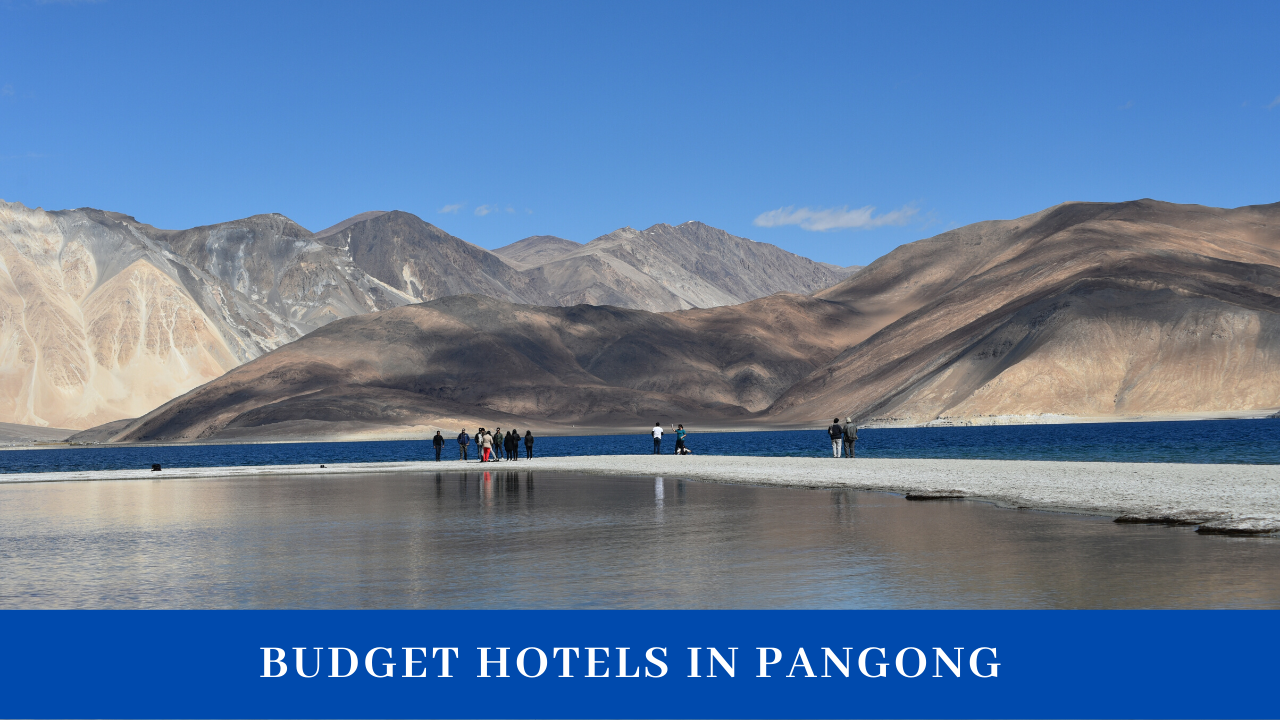Before choosing the right place for staying near Pangong Tso Lake, you will have to decide how much is your budget and what luxuries do you want. Since it is a remote place, you will have to compromise on comfort. The biggest luxury that you can find is the attached bathroom which would only be available at the most expensive hotel. You can also opt for Homestays that are less expensive, more homely but with shared or outside toilets.
If you wish to stay near the lake, your only option is camping but if you don’t want to stay in camps, you can opt to stay in Sapngmik or Lukung from where you can have a full view of the lake.
Home Stays at Spangmik: Home Stays like Padma, Gongma, Sasoma Guest House all offer accommodation at cheap prices and excellent views. Mostly all homes at Spangmik Village act as homestays and though you won’t find any hot water, you will get home-cooked food in Ladakhi Style.
Price: Rs 700-1000 (meals included in some) for a double bedroom.
Address: Spangmik Village, Pangong Tso – Ladakh
- Pangong Camp Resort
This is the only cemented hotel near Pangong Tso Lake and though the prices are high, you will get a clean room, good food and nice services. It also has attached bathroom and hot water available in buckets. So if you are not going on a tight budget and give more consideration to comfort, this is the place for you. Though, you will need to pre-book it since it remains fully booked always. Don’t hope to just land there and find a room.
Price: Rs 3500-4000 for a double bed room.
Address: Spangmik Village, Pangong Tso – Ladakh
- Himalayan Wooden Cottages
If you don’t plan on camping in tents, this is another option. Stay at wooden cottages to beat the harsh winter. They have a great view of the lake and decent food. There’s also limited electricity backup. The pricing is also decent because meals are included in it.
Price: Rs 3500-4000 (Two meals included)
Address: Spangmik Village, Pangong Tso – Ladakh
- Dothguling Guest house Tangste
There are nice clean rooms, also a bit spacey. In case you are unable to find accommodation, elsewhere, keep this as a backup option. You can find hot water here in buckets and they have western as well as Ladakhi style toilets.
Price: Rs 1000-1500 for the double bedroom
Address: Tangste Village – Ladakh / Opposite health centre
- Himalayan Retreat
Staying close to the lake means staying in tents. Here you can find tented accommodation that is comfortable with electricity for a limited period as well as a western toilet. The pricing is a bit higher but the place is good with a great view.
Price: Rs 3500 with two meals included.
Address: Spangmik Village, Pangong Tso – Ladakh
You can also find Eco Huts in Lukung Village which are luxury tents with electricity and western toilets but it is pricey. (Around 3500-4500 per person) There are many other dormitory-style dhaba tents running from Lukung Village till Spangmik Village. The price range varies from place to place but the maximum would be Rs 3500 and Rs 500 minimum. Most of them will offer meals and western toilets.
Additional Tip: Avoid visiting the Lake in harsh winters but even if you do, stay at Tangste instead of Lukung or Spangmik to give your body a chance to acclimate itself according to the high altitude. You can find discounted prices for some of the resort and camps but no pre-booking for Home Stays
